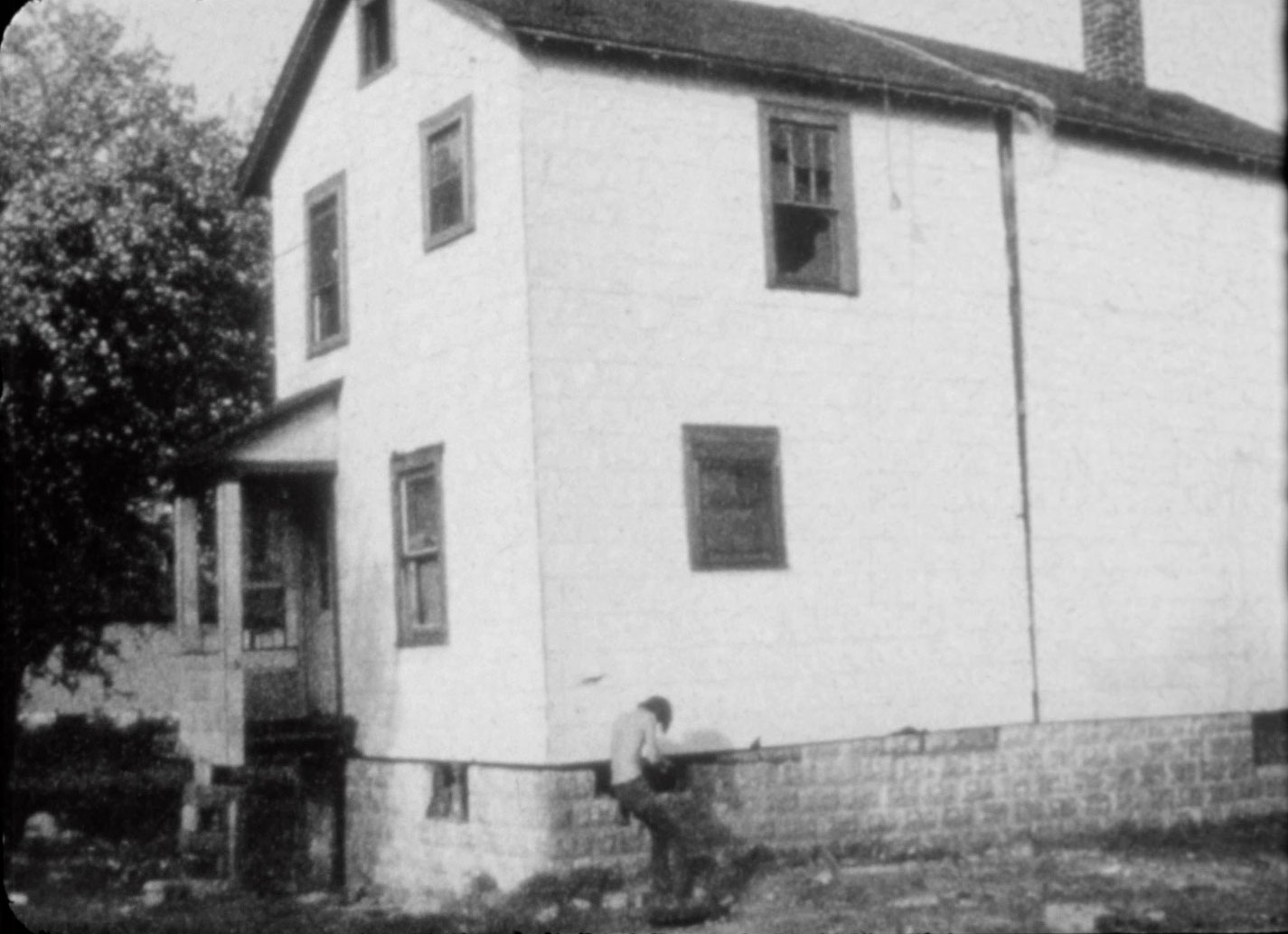Over the course of a single day, a man saws a house in half. A silent and extremely filmic flickering of light and shadow, hand-held shake, spliced establishing and detail shots, and occasional shirtless cameos by the artist and his assistant, filthy with house-innard dust and sweating from the New Jersey suburban summer sun and the strain of their efforts. This is the classic 1974 film Splitting by Gordon Matta-Clark, an artist best-known for slicing teardrop-shaped holes in the floors of SoHo lofts to reveal the inner workings and create windows into adjacent worlds. Gifted by a supporter with a derelict family home in pastoral Englewood, Matta-Clark gives it the treatment, finding its center line and slicing it like a birthday cake from roof to foundation. It’s hard work, satisfyingly visceral and at times frightening and fiddly. Some walls are more load bearing than others, and when it comes to the rough surgery of the interior spaces, the humor of the spectacle turns to nostalgia and emotion.
As the masses and walls of the structure peel apart under the weight of their calving, the light streams in—through perforations and into places where it never shone before. This is beautiful, poetic, prosaic, an insistent metaphor for the body. As the artist’s attention reaches the foundations his touch proceeds gingerly, with calculation, like a combination game of Jenga and Chicken. The intentionality of the final dismantling contrasts with the expressive gesture of the earlier interventions and gives form to the thoughtfulness behind the brute display. As a conceptual redefinition of “sculpture,” it’s perfection; equally ideal as an emblem of the heroic, masculine, 20th-century tormented, sexy, bad boy artist archetype. As a critique of any number of skewed socioeconomic dynamics, it holds up—the wasteful decadence of late-stage capitalism, the vanity and corruption of gentrification, the sad state of affairs with regard to the American Dream, the solipsistic art market, the punk-inflected zeitgeist of destruction as an act of creation, or just land art for a city kid. The reason the film remains a classic is that like all his work, Matta-Clark left holes big enough for every generation to get in through.


